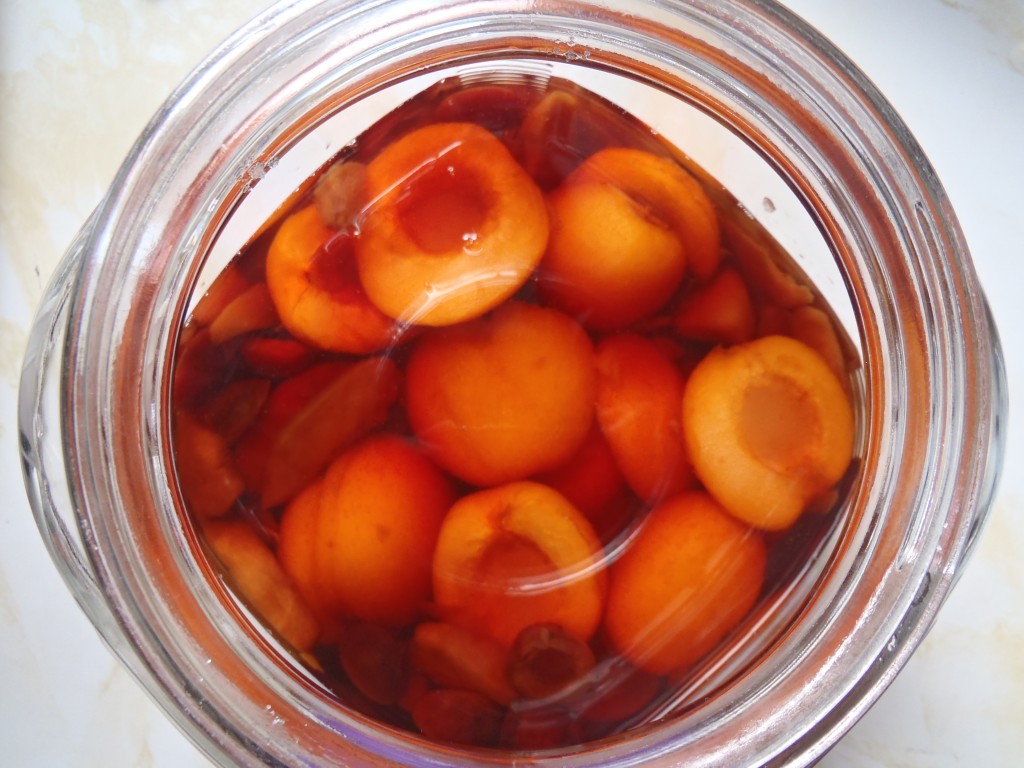 Rumtopf, literally “rum pot”, is a traditional German fruit preserve. As each type of fruit comes into season, it is macerated with sugar, placed in the pot, then covered with rum. Traditional rumtopfen are earthenware pots with heavy lids, but any wide-mouthed, non-reactive vessel can be used.
Rumtopf, literally “rum pot”, is a traditional German fruit preserve. As each type of fruit comes into season, it is macerated with sugar, placed in the pot, then covered with rum. Traditional rumtopfen are earthenware pots with heavy lids, but any wide-mouthed, non-reactive vessel can be used.
I use about one part sugar to two parts fruit, by weight, for each addition.
Once the last layer of fruit is added, the mixture steeps for a few months, and is traditionally eaten around Christmas.
The mixture goes through some profound transformations during aging. It loses the striking vibrancy seen above and turns a uniform burgundy. The liquor loses its clarity and becomes murky, with an exceptionally rich mouthfeel, verging on viscous. The severity of the alcohol mellows. The pot no longer exudes the delicate aromas of early summer, but rather a medicinal scent, strong of the boozy raspberries.
The fruit can be spooned over, say, ice cream, cake, or waffles, and the liquor can be drank on its own. On waffles with whipped cream, with an ounce of the liquor and black coffee. The fruits have combined to form one homogeneous flavour, so it matters little whether you spoon an apricot or a strawberry onto your plate. The fruit is extremely delicate, saturated with liquid.
A fantastic way to start the day, as long as you don’t have to operate heavy machinery later in the morning.
Single Fruit Rumpot: The Cherry Pot, and Plumplop
As mentioned above, the traditional method of layering the fruit as it comes into season results in a very generic “fruit” flavour. In recent years I have been making a few different rumpots, each containing only one type of fruit. The results have been fantastic. The aromas are so strong and distinct that and I don’t think I will ever the multi-fruit variety again.
The best has been a pot filled with pitted Evans cherries and Appleton’s rum. After a few months the pot had a remarkable cherry aroma with clear notes of almond extract. The natural acidity of the cherries was a welcome addition to the liqueur.
Another notable mention goes to a rumpot made with BC plums. By Christmas the pot smelled like purple Mr. Sketch scented markers. It made a deadly liqueur that we initially called “plumpot,” but, after several glasses, could only describe as “plumplop.”
